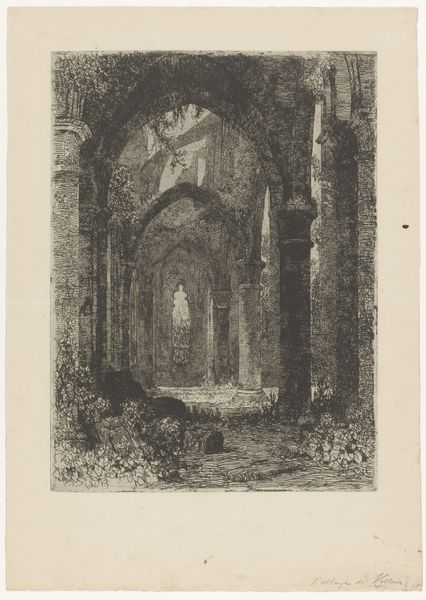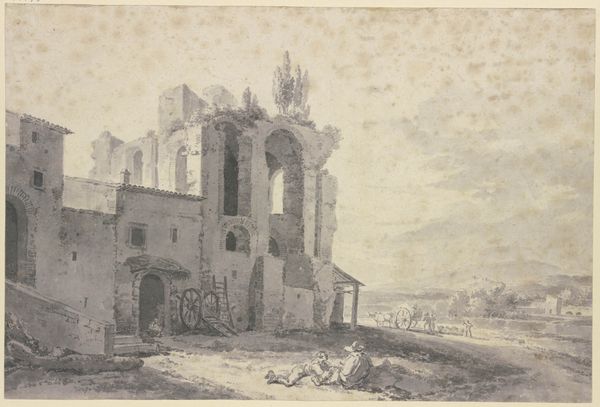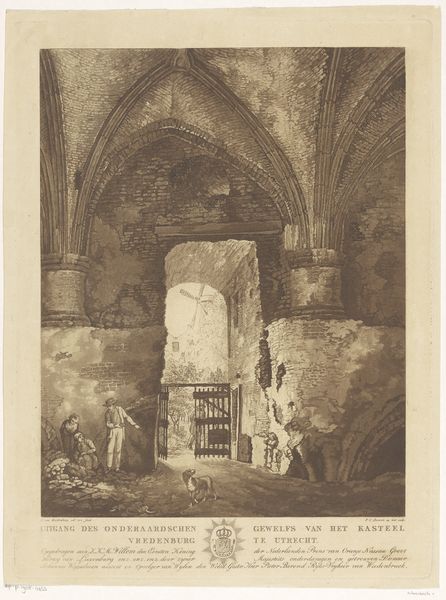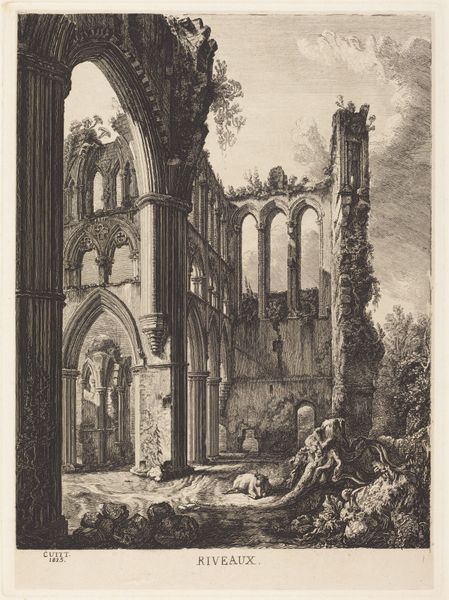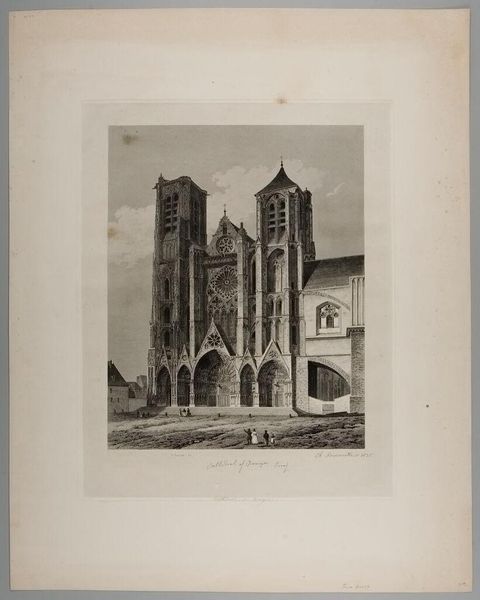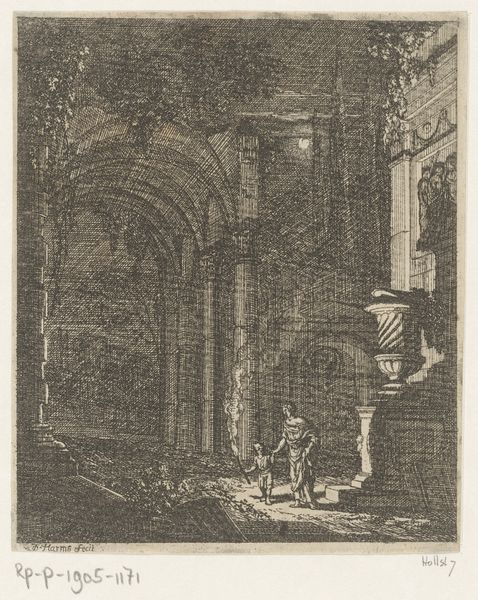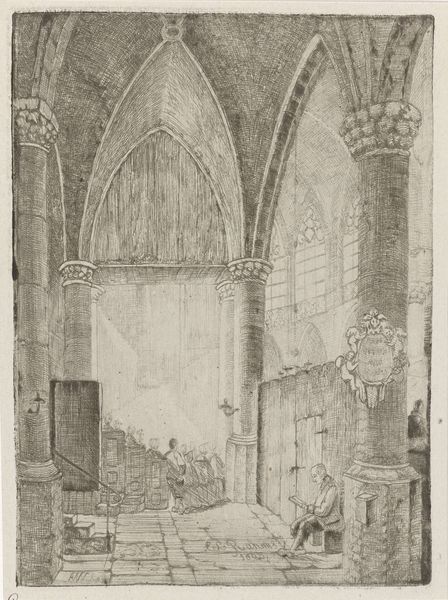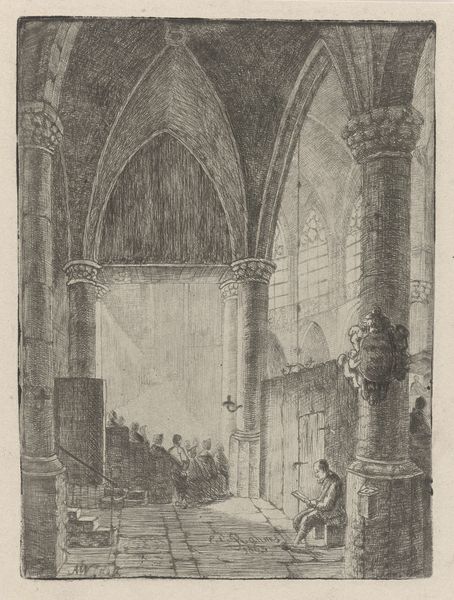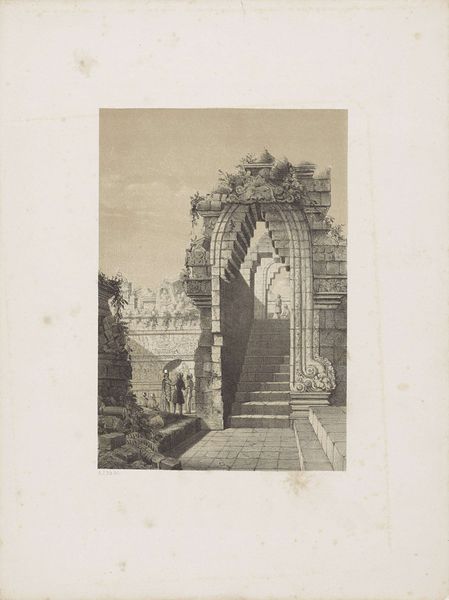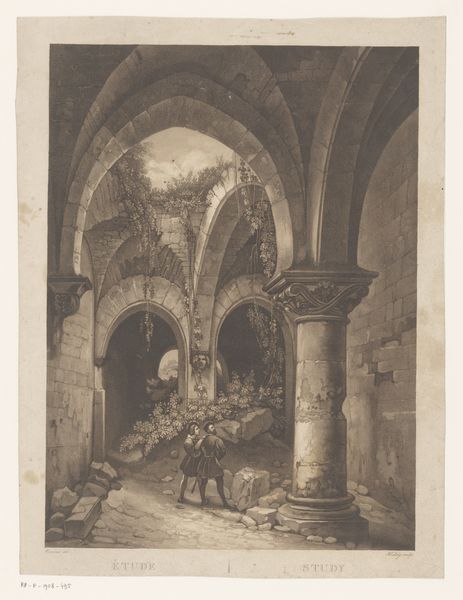
Dimensions: height 278 mm, width 240 mm
Copyright: Rijks Museum: Open Domain
Editor: Here we have an engraving, likely from the latter half of the 19th century, titled "Ruïne met op de voorgrond een man hangend over een steen" by F. Herinck. The ruined architecture definitely gives it a melancholic air... almost Romantic, in the capital-R sense. What jumps out at you when you see this work? Curator: The weight of time, absolutely. See how the lines practically *sing* of decay? It’s not just about showing us a ruin, is it? More like, how memory clings to stone. This solitary figure in the foreground - slumped over the stone, almost *becoming* part of the ruin... I wonder, is it a kind of self-portrait, an embodiment of Romantic solitude perhaps? Do you see echoes of earlier masters like Piranesi in the composition? Editor: I see what you mean about the echoes of Piranesi. The man kind of blends into the ruin almost as though, just like the architecture around him, time is forgetting him. The ruins remind me a lot of Romantic paintings, especially since Romantic painters loved including ruins in their work. Why do you think ruins were such a popular subject? Curator: Well, think about what ruins represent: the passing of great empires, the futility of human ambition... they’re like a memento mori on a grand, architectural scale! And in the Romantic era, that fascination with mortality, with the sublime power of nature over human creation, became all the rage. It spoke to something deep within them. Plus, it just looks pretty. And I would wager that F. Herinck felt the same when composing the image here. Do you feel a sense of personal history coming into play with your own viewing of the work? Editor: I didn't before but I certainly do now. Thinking of this image, or Romantic works like this, as visual memento mori is sure to add depth to my future encounters with artworks. Thanks for opening my eyes, and making it easier to view this work through the lens of romanticism and its preoccupation with history. Curator: My pleasure. Sometimes, we are looking back to move forward, even in our own perspectives.
Comments
No comments
Be the first to comment and join the conversation on the ultimate creative platform.
